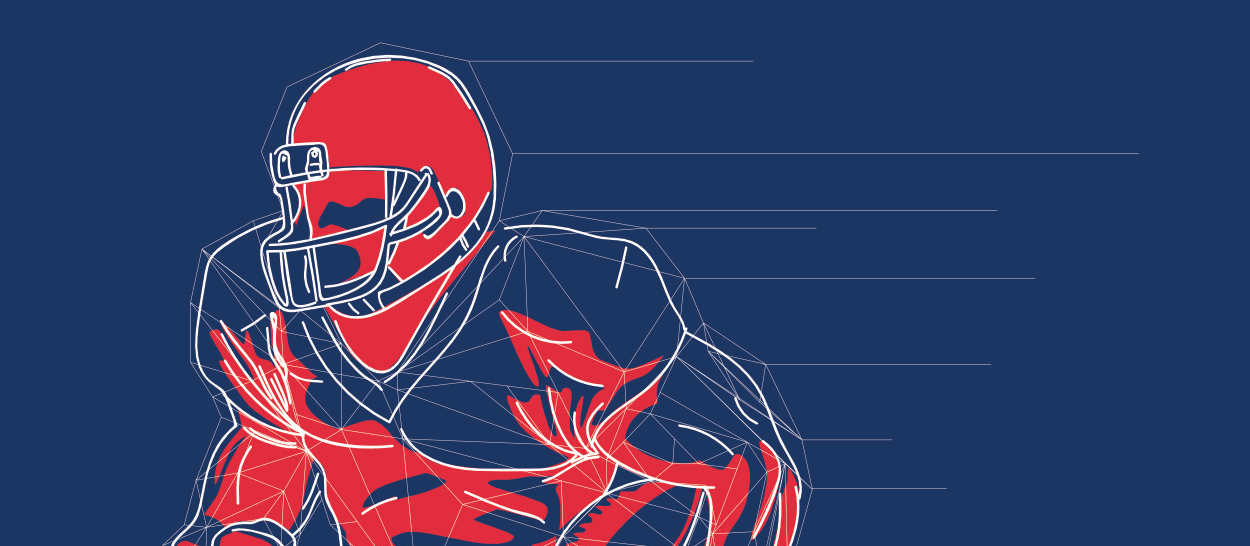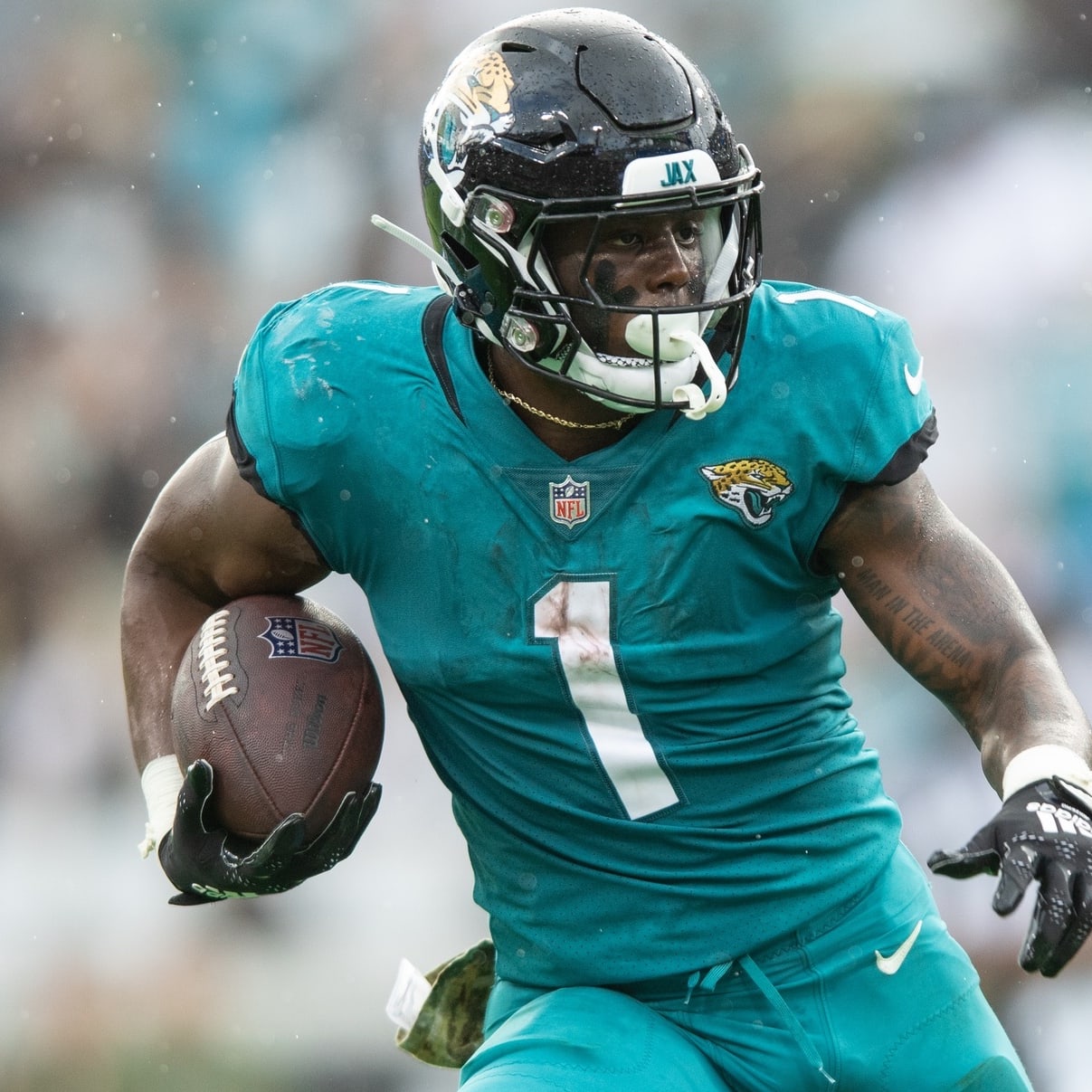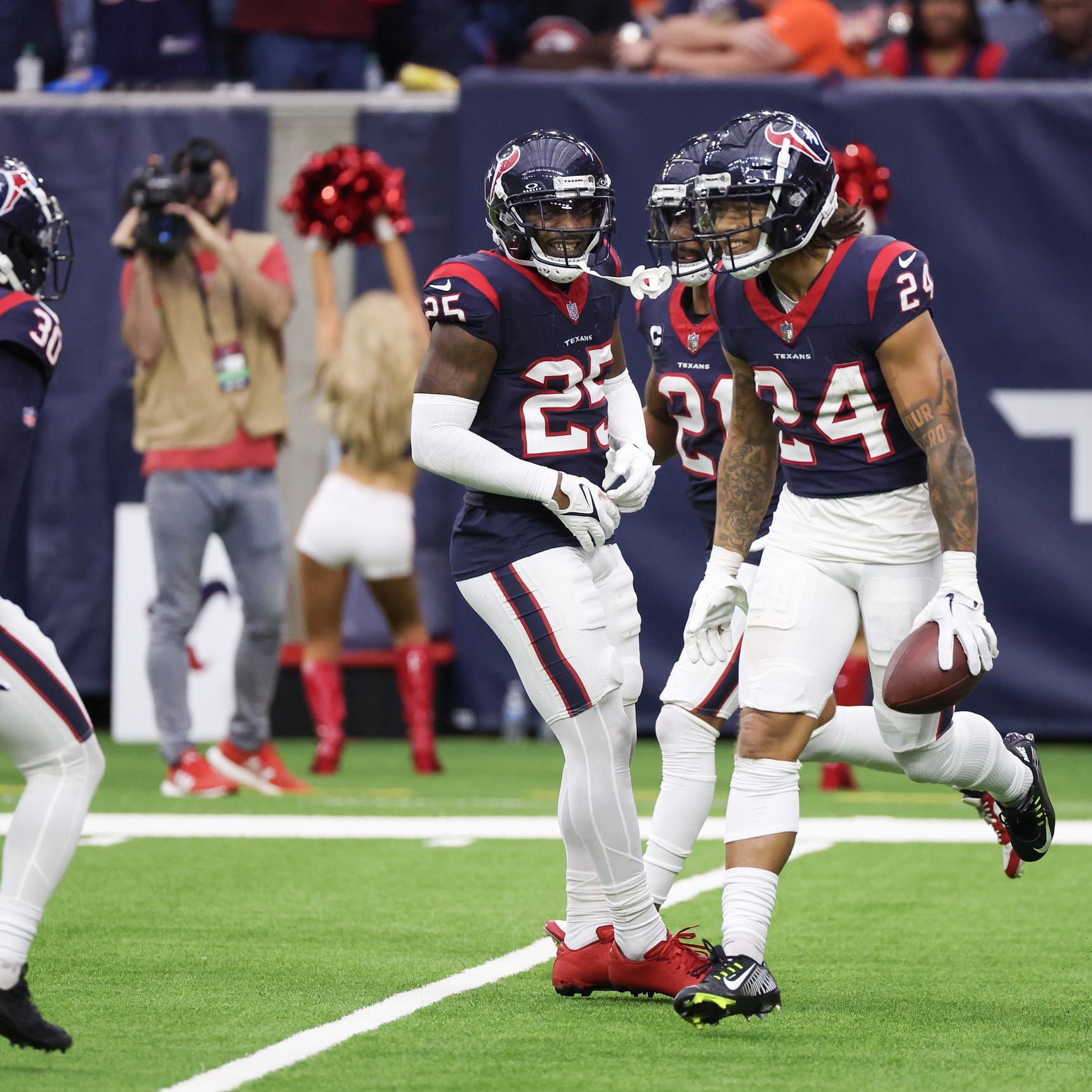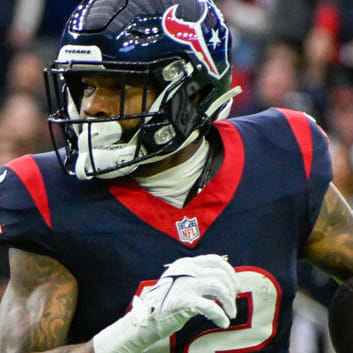This article is part of our Injury Analysis series.
After a mild Week 13, the injury bug reappeared in full force Sunday, running rampant throughout the NFL and altering the fantasy landscape.
Dalton's injury in Cincinnati's loss to Pittsburgh was likely the most impactful. After leading the Bengals down the field early in the first quarter, Dalton threw a red-zone interception and then broke his right thumb attempting a tackle on the ensuing return. He was immediately removed from the game and would later emerge from the locker room sporting a cast on the injured hand.
The thumb is made up of three bones, the two phalanxes and the first metacarpal. At the base of the thumb sits the carpometacarpal joint where the metacarpal articulates with a small bone of the wrist. This saddle-shaped joint is the most important component of the highly mobile digit, as it's the reason the thumb is capable of moving in multiple directions.
The second bone of the thumb is the proximal phalanx and it connects to the aforementioned metacarpal bone to form the metacarpophalangeal (MCP) joint. The MCP joint is stabilized by the ulnar collateral ligament (UCL) that attaches to the base of the proximal phalanx. The next and final bone is known as the distal phalanx which forms the tip of the thumb.
The Bengals have not publically reported what bone Dalton fractured. However, they did announce that surgery wouldn't be necessary, meaning the fractured pieces remain aligned and any additional ligament damage is minimal. Instead, the injured digit will
After a mild Week 13, the injury bug reappeared in full force Sunday, running rampant throughout the NFL and altering the fantasy landscape.
Dalton's injury in Cincinnati's loss to Pittsburgh was likely the most impactful. After leading the Bengals down the field early in the first quarter, Dalton threw a red-zone interception and then broke his right thumb attempting a tackle on the ensuing return. He was immediately removed from the game and would later emerge from the locker room sporting a cast on the injured hand.
The thumb is made up of three bones, the two phalanxes and the first metacarpal. At the base of the thumb sits the carpometacarpal joint where the metacarpal articulates with a small bone of the wrist. This saddle-shaped joint is the most important component of the highly mobile digit, as it's the reason the thumb is capable of moving in multiple directions.
The second bone of the thumb is the proximal phalanx and it connects to the aforementioned metacarpal bone to form the metacarpophalangeal (MCP) joint. The MCP joint is stabilized by the ulnar collateral ligament (UCL) that attaches to the base of the proximal phalanx. The next and final bone is known as the distal phalanx which forms the tip of the thumb.
The Bengals have not publically reported what bone Dalton fractured. However, they did announce that surgery wouldn't be necessary, meaning the fractured pieces remain aligned and any additional ligament damage is minimal. Instead, the injured digit will be immobilized and given an ample amount of time to appropriately heal. This can take anywhere from four-to-eight weeks depending on the involved bone, and the team is already prepping to be without their starting quarterback for the remainder of the regular season. The fact that the injury occurred to his throwing hand complicates the timeline, as the various grips he needs to properly man the quarterback position will be negatively impacted.
AJ McCarron will take over and face a San Francisco 49ers secondary that gives up plenty of passing yards but has limited the number of passing touchdowns surrendered. Still, it's hard to have much confidence in the unproven second-year quarterback, and the expectations for the rest of Cincinnati's offense, including A.J. Green, should be adjusted accordingly.
Rawls' injury was equally demoralizing for fantasy owners, as he too went down on his team's opening drive. Starting in place of the injured Marshawn Lynch, Rawls suffered a left ankle injury after just 10 plays. X-rays confirmed a fracture in the joint and the young running back will see his rookie season end prematurely. Fortunately, it appears Rawls will avoid surgery and should be ready to go for training camp.
DuJuan Harris and Fred Jackson took over in the Seattle backfield, and it appears recently-signed Bryce Brown will also have a shot to compete for carries. Incumbent starter Lynch continues to recover from abdominal surgery, but he is rehabbing outside of Seattle and his availability for the regular season remains in doubt.
Yeldon made an early exit in his team's blowout win over the Colts after suffering a left knee sprain in the third quarter. He also appeared to injure the ankle on his opposite leg earlier in the game. Specifics regarding the extent of the injury and exact ligament involved remain limited, though Yeldon left the locker room on crutches following the game. With Toby Gerhart and Bernard Pierce already on injured reserve, Denard Robinson becomes the clear favorite to take over in the Jacksonville backfield. Robinson rushed 14 times for 75 yards and a touchdown on Sunday and hauled in one reception for 12 yards. With a favorable matchup against the Falcons on the slate for Week 15, Robinson becomes a top waiver wire target in all formats.
Turf Burns
Tyler Eifert: If losing Dalton wasn't bad enough, the Bengals were forced to proceed without their top tight end after Eifert sustained a concussion. It will be interesting to see if there are any crossover effects between his previous neck injury and this latest ailment. Regardless, he will be forced to complete the league-mandated concussion program before he can return to play.
Brian Hoyer: The Texans quarterback will join Eifert in the concussion protocol after he too suffered the injury over the weekend. This is Hoyer's second concussion of the season and he will likely need additional time to recover as the effects of multiple head injuries are cumulative. Couple this injury with a neck strain and an undisclosed wrist ailment and it's hard to envision Hoyer playing against the Colts. T.J. Yates would start in his place.
Vincent Jackson: The veteran receiver is expected to miss time after suffering an MCL sprain. Jackson has been limited throughout the season with knee issues and, despite an impressive performance in Week 4, he's been a bit of a letdown. Consider a more reliable option.
Andrew Luck: Luck hopes to return to full practice this week and remains confident he can play again this season. The Colts quarterback has not played since suffering a lacerated kidney and a partial abdominal tear in Week 9. He remains a difficult player to gauge, as his early-season struggles and injury problems have made him a dicey play despite his previous track record and obvious upside. Stash him if you can but understand he comes with plenty of assumed risk.
Greg Olsen:Cam Newton's favorite target hopes to play Sunday against the Giants despite a knee injury suffered against the Falcons. A, MRI taken on the joint appeared to reveal good news, but no official diagnosis has been provided. The Panthers' stellar record could influence the way in which they manage Olsen for the remainder of the season, and don't be surprised if he takes a game off or receives limited snaps in order to get completely healthy for the playoffs.
Jonathan Stewart: Olsen isn't the only Panther nursing an injury, as Stewart has been diagnosed with a left foot sprain. He was seen wearing a protective walking boot on Monday and an MRI confirmed the injury. Expect Carolina to treat him conservatively and turn to Fozzy Whittaker and Cameron Artis-Payne if they feel Stewart is unable to play.










